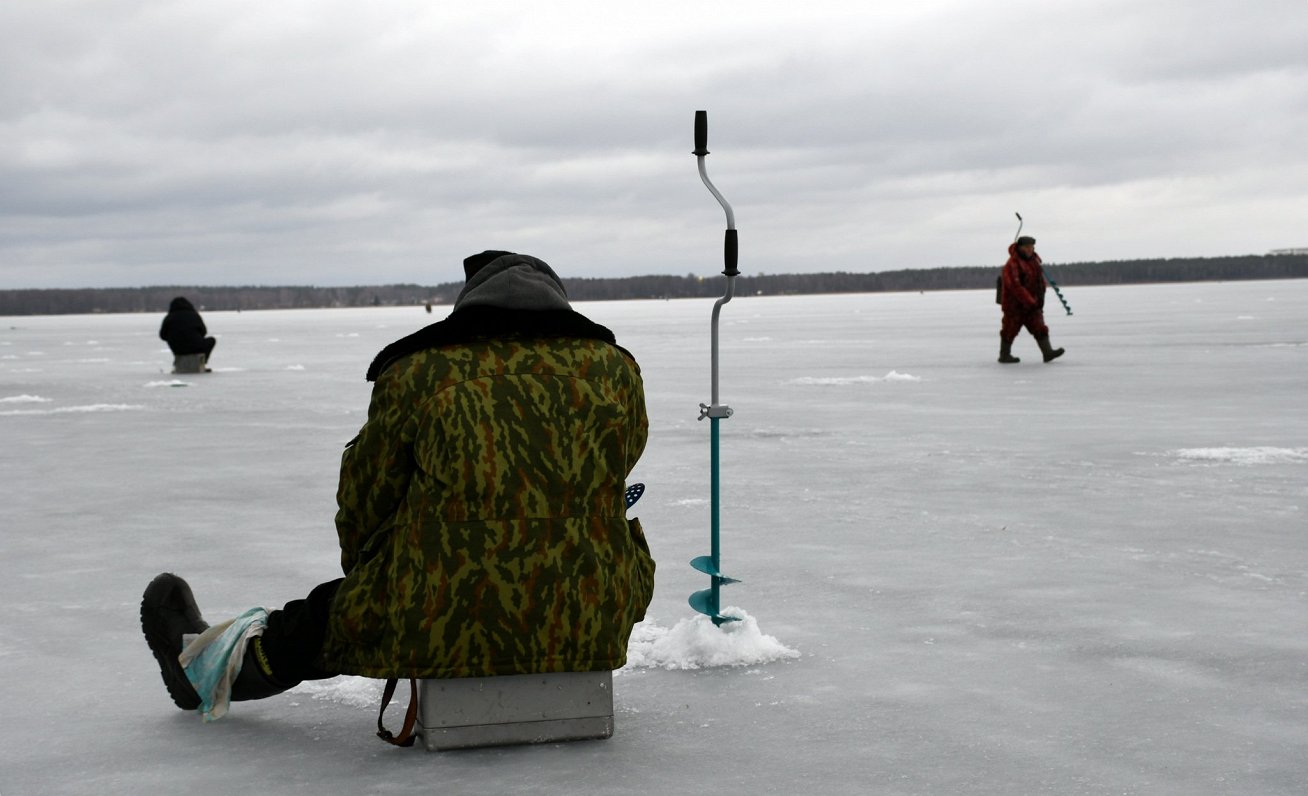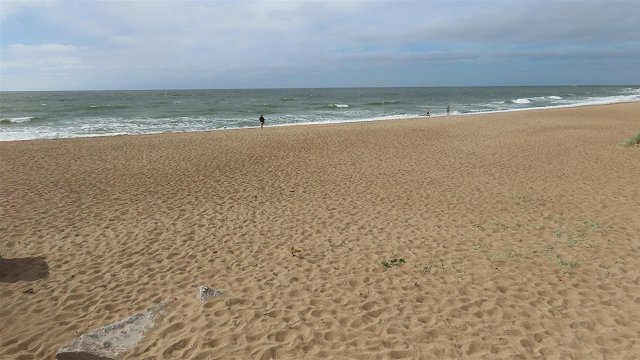The Latvian Environment, Geology and Meteorology Center (LVĢMC) on December 20 published a list of ice-walking myths in a bid to educate the public to the risks they run when ice fishing, skating, driving or crossing frozen bodies of water.
Esi uzmanīgs un domā par savu drošību! Ledus biezums ir nevienmērīgs. Iestājoties atkusnim, ledus biezums samazināsies, kļūstot vēl bīstamāks. Atrasties uz ledus nedrīkst!#Ledus @ugunsdzeseji pic.twitter.com/L1IdVbNA1Y
— Meteo.lv (@LVGMC_Meteo) December 20, 2022
As previously reported by LSM, Latvia regularly tops the EU's list of deaths by drowning with tragedies occuring both during the hot summer months and during the winter when hundreds of ice fishermen can be seen pursuing their hobby – sometimes on perilously thin and brittle ice.
Below are some of the LVĢMC's myth-busting facts.
Myth: Thick ice is stable.
Reality: Even thick ice can be unstable, particularly in conditions of thaw and refreezing (as currently being experienced).
Myth: Snow on the ice enables it to last longer.
Reality: Snow on the ice acts as an insulator. The ice beneath the snow may be thinner and more unstable. Snow falling on top of ice makes it more difficult to judge the thickness and condition of the ice.
Myth: A very intense freeze means the ice is thick and stable.
Reality: A sudden, intense freeze may actually make the ice more brittle and likely to crack.
Myth: Ice will be the same thickness across a whole body of water.
Reality: It is fairly rare to get a completely consisitent ice layer. Usually there will be considerable variations in ice thickness, even across a short distance.
According to the LVĢMC, no ice can be considered 100% safe. The most dangerous places are beneath bridges, close to the shore and obstacles in the ice, near streams, inflows and outflows and among reeds and other plants.
If you do decide to venture onto the ice, always check its condition, inform others of where you will be and when you will return, and keep a particular eye out for children who may be tempted to play on the ice.
What to do if you fall through the ice:
- keep calm!
- keep your head above water - you can tilt your head back a bit;
- do not move frantically, losing strength, instead move your legs evenly, as if turning bicycle pedals;
- breathe as slowly and deeply as possible;
- if possible, call out;
- if a bag or heavy coat pulls you down, try to remove them.
- the ice is thin where you broke in, but it should be more durable where you stood before you fell.
- turn your face to the place where you came from and put your hands on the ice, stretch your arms as far as possible. Try to lie on the edge of the ice with your chest and try to push yourself out of the water.
- do not need to get up immediately, it is better to roll away from the dangerous place. Climb to the shore on the same path you came.
- when going ashore do not stop, but run to the nearest warm place.
In order to successfully get out of the ice, anglers and others are advised to bring various aids - ice sticks or hooks, with the help of which you can pull yourself out more easily. A good solution is a full fishing suit with a swimming function or life jacket, which will allow you to float on the water after breaking into the ice.
What to do if you see someone falling in:
- call 112 immediately, giving the dispatcher the address or explain how to get to the scene, answer all questions of the dispatcher;
- to help, approach at a crawl or lie down without approaching the broken ice itself. Try offering a rope, tied clothes, a long branch or some other object from a distance of about 2 - 5 meters. If there are several rescuers, it should be noted that they should be 2 - 3 meters apart;
It's not just people who can get into trouble on the ice. The state Fire and Rescue Service recently went to the aid of an elk who had not heeded the precautions above!
Šodien @ugunsdzeseji saņēmis izsaukumu uz Rēzeknes novadu, kur Pušas ezerā 250 metrus no krasta ledū bija ielūzis alnis. Glābējiem veiksmīgi izdevies izglābt dzīvnieku.
— LTV Ziņu dienests (@ltvzinas) December 15, 2022
VUGD atgādina, ka atrasties uz ledus ir bīstami un tā biezums uz ūdenstilpēm nav vienmērīgs. pic.twitter.com/9uDieGUaQZ































